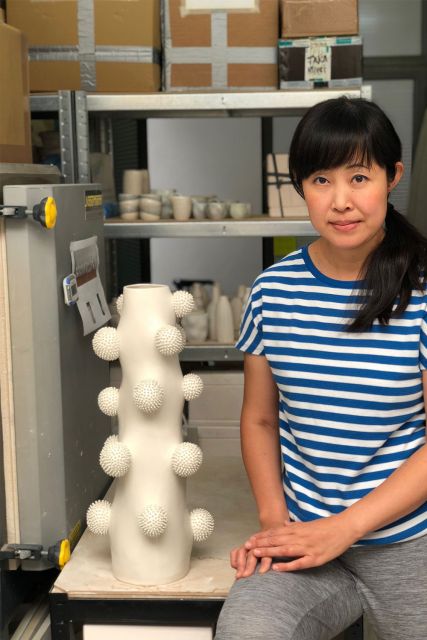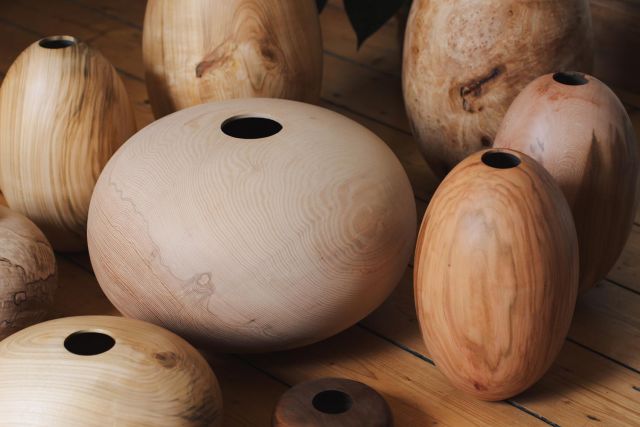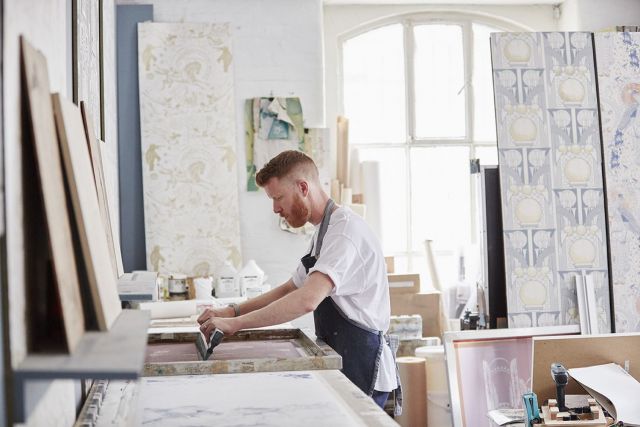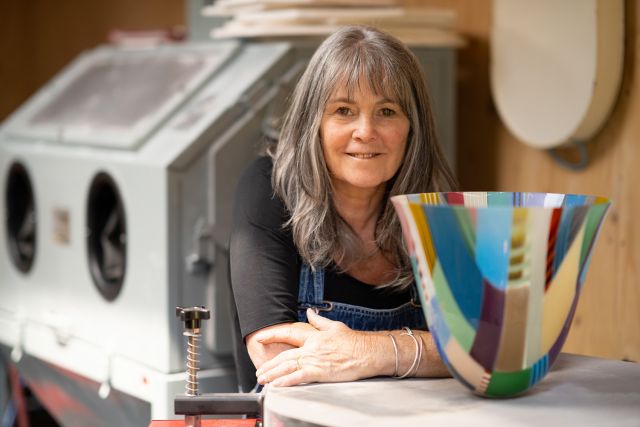The design for this porcelain container was derived from a study of budding plants. Ikuko finds buds and shoots more attractive than flowers because of the energy they hold, poised to burst open into petals, and it was this energy she wanted to capture. The stigma-like section at the top is achieved by piling up drops of porcelain slip.
Height 21 cm
Diameter 16.5 cm
 Ikuko04.jpg.jpeg)

 IMG_1095.jpg.jpeg)
 IMG_4174.jpg.jpeg)
Ikuko Iwamoto
- Ceramicist
- London, United Kingdom
- Rising Star
By appointment only
+44 7734592791
When the invisible is made visible
- • Ikuko makes all her moulds by hand
- • Abstract artists including Paul Klee inspire her
- • She sometimes combines clay with materials such as phone cables and metal
Genes, cells and organic forms are fascinating to Ikuko Iwamoto. Her objects seem alive, shaped to resemble organisms you could observe through a microscope. Her sculptural aesthetic developed first at Tezukayama College in Japan and then at the Royal College of Art in London, to where she moved in 2001. Ikuko began to make tableware using the slip casting techniques she learned at the RCA, before feeling the need to push herself in new creative directions. The idea to make framed sculptures, or wall pieces, was born “in order to liberate myself from the dilemma of working on functional objects,” as she puts it. She has been concentrating on wall pieces since 2012, taking an innovative approach.
Read the full interviewWorks
Photo: © Ikuko Iwamoto

Photo: © Ikuko Iwamoto
This sculptured piece is a development of Ikuko’s Spiky Spiky Bowl design from her table-top range. The idea came from browsing images of microscopic cells. Ikuko wanted to incorporate this element into her previous work, though the firing of such a fragile construction was unknown territory for her. She was afraid it would emerge distorted or cracked after the time-consuming process of perforating the bowl and inserting all the hand-rolled spikes.
Height 8.5 cm
Length 33 cm
Width 22

Photo: © Juliet Sheath
These two flower vessels are so tall they could barely fit into the kiln. Ikuko originally created them on a smaller scale in 2008, combining two forms of decoration: spikes and piled-up dots of porcelain. Similar vessels occur regularly in her work since them. The design is inspired by cotton buds and shoots.
Height 60 cm
Diameter 30 cm
Height 60 cm
Diameter 28.5 cm

Photo: © Juliet Sheath
These two freestanding porcelain sculptures are part of a project initiated in 2018 exploring architectural themes. Ikuko chose natural and artificial shapes that impressed her, then created the slip-cast, pipe-like segments, drilling them with multiple holes to create an organic feel. The top section was created separately and attached to the rest of the construction once the spiked details were finished.
Height 63 cm
Width 43 cm
Length 35 cm
Height 38 cm
Width 48 cm
Length 42 cm

Photo: © Ikuko Iwamoto
Inspired by her work on the previous Spiky Spiky Bowl, Ikuko created a larger and slightly shallower version. She drew on images of microscopic unicellular organisms that can alter their shape, such as the amoeba and paramecium. The large size of the bowl was a challenge, and the work had to be handled extremely carefully when being placed into and removed from the kiln.
Height 10 cm
Width 37 cm
Length 28 cm













